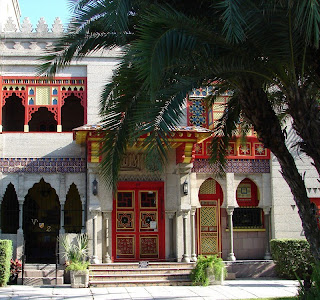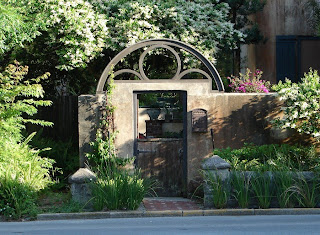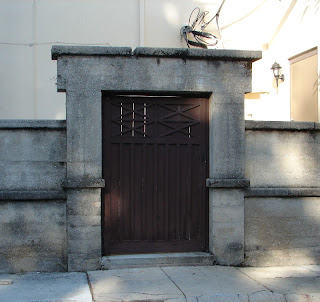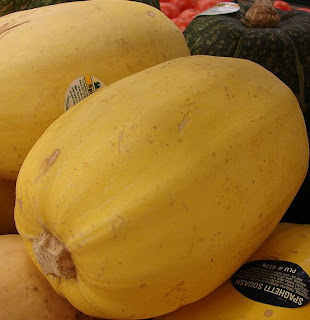Alex and I have called a truce realizing that there are no bad feeling between us, just an inability at this point to maintain a deeper relationship. That said we realized we still enjoyed going on little adventures together. And of course the most natural place to go on an adventure was... St. Augustine! We decided to get off the usual track and venture out to see what was on some of the side streets of the historic district.

Doing this I somehow fell into taking pictures of doors. Recently I attended an art show and there was a presenter who took some mysteriously engaging photos of doors from all over the world. Each one caused you to marvel at it's beauty and set you wondering what was behind each portal. Once I downloaded my pictures, I realized just how interesting doors can be. As usual, click each photo for a better view.

The first door we encountered was the Villa Zorayda which was the winter home of a millionaire built in 1883 as a replica of a wing of the Alhambra Palace in Spain. A door and entrance this ornate does make you wonder what he decided to put inside.

Next came the Bed and Breakfast door. Alex said it looked ordinary but to me it looked like a doll house. And, given the history of St. Augustine who knows how many affairs have been carried on in just such an innocent looking place?

I have to say we both debated taking this shot, but looking at it now reminds me of the French Quarter in New Orleans before the hurricane. Many houses there had/have courtyards that lead to the front door. The door is hidden away down this long courtyard.

And now to the very popular door that I call "the friendly door" to the right that
Ana liked so much. I gave her a preview and she quickly free-handed a drawing that is both interesting and whimsical. It looks almost like a watercolor rather than free hand drawing.

As I told her, I like the hand in the picture because it gives a perspective that you are looking over her shoulder while she draws. So it is a drawing and a photo rolled into one! I liked it so much I have made it a permanent logo for the gallery.

And then one of my favorites. I call this door "The Secret garden" because the entrance is through this lush growth of plants and flowers. Is it a kindly old lady who lives here or a young couple who enjoys the privacy that the garden provides?

This next door was hard to place because in my mind it says "strength" and I call it "The Rough Door" Somehow this door says to me the design is to keep people out so it is strong and sturdy. But, you never know, there could be a lush garden behind it just like above... we just can't see it.

And finally, the "Palm Door". I loved this house because every board and plank is faded and weather-beaten. It shouts mystery! And then the palm on the door. Is it from Palm Sunday and just had not been taken down? Or, is it a permanent fixture, weather-beaten like the house?








